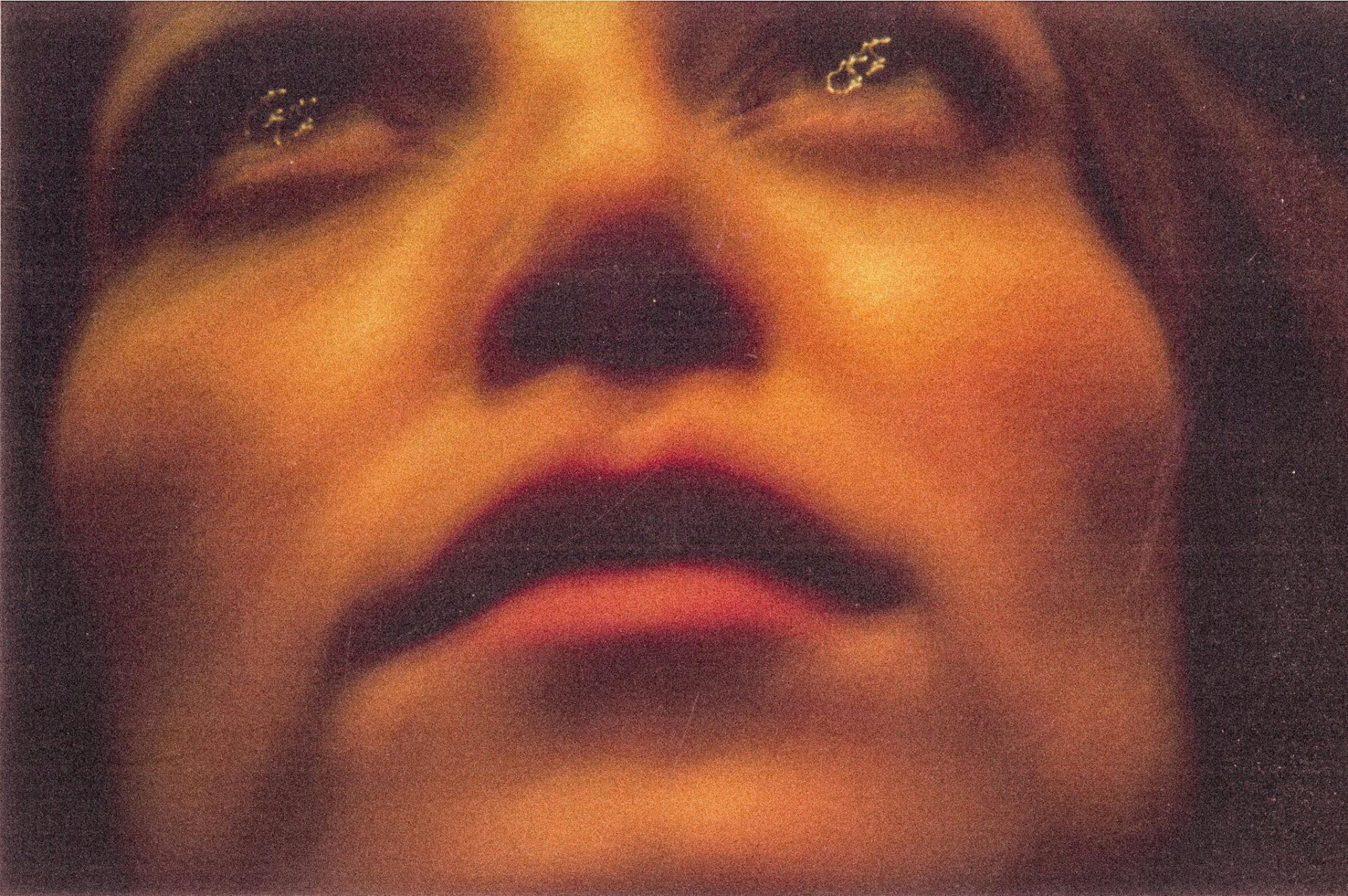
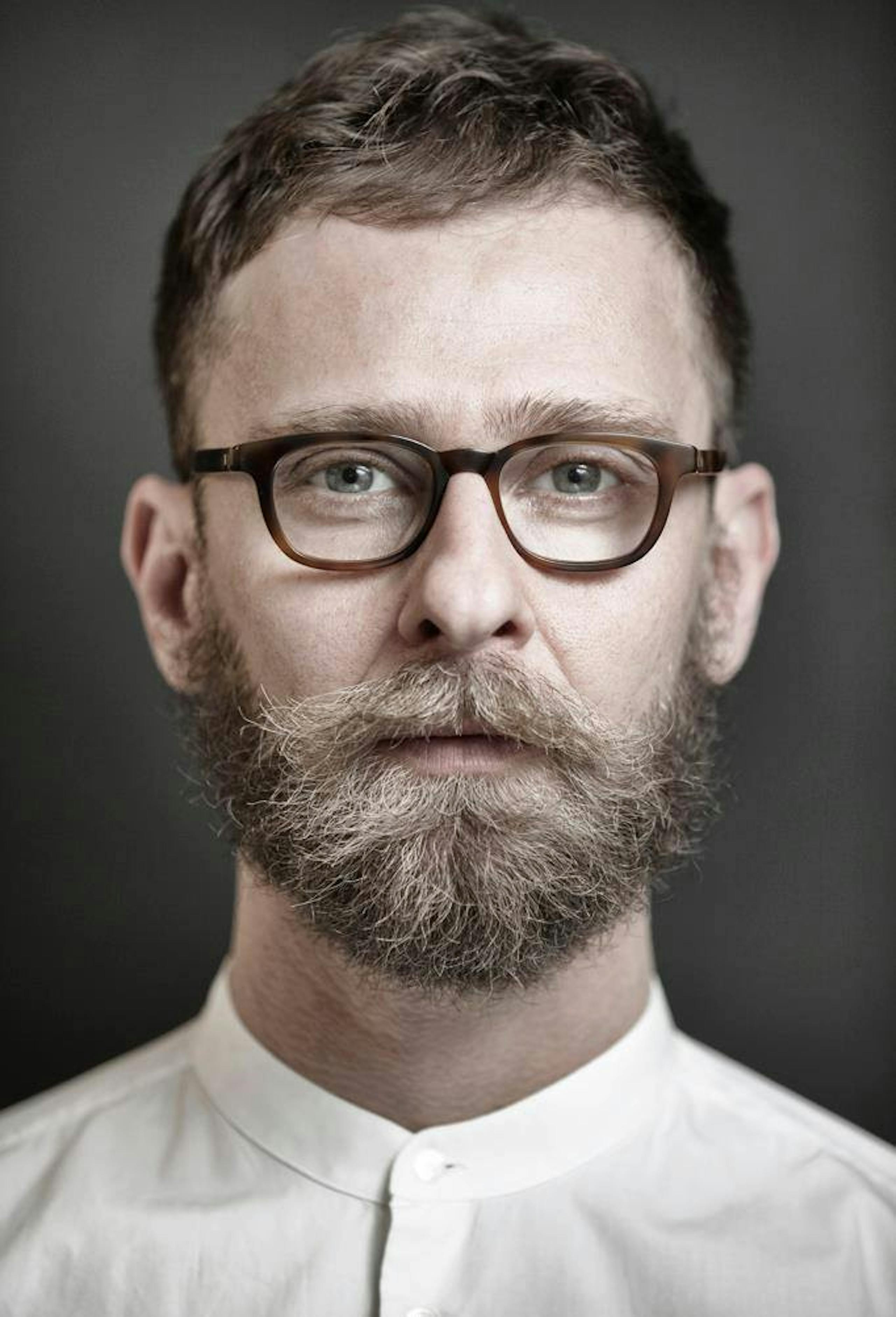
© Claudia Pajewski
Lynndie England, wearing military pants and a plain T-shirt, holds a leash attached to a man lying naked on the floor. She is looking at him but he is looking at the camera. [Photo here] The square photo is cropped to show the man from the waist up, leaving out his pelvis and legs. In the corridor behind them are the doors to a number of cells with what seems to be sheets and towels hanging. On the ground are various pieces of paper, perhaps scattered by the wind.
In April 2004, this photograph appeared in a 60 Minutes documentary on the American television channel CBS, along with many other images. The documentary condemned the torture inflicted by American soldiers on the prisoners in the Abu Grahib (“place of crows”) prison in Iraq. As early as November 2003, news of irregularities in the prison had begun to circulate, thanks to a report by the Associated Press news agency. As of today, eleven military personnel have been convicted, but trials are still ongoing.
Valentino Villa—winning director with Deflorian/Tagliarini of the Premio Ubu 2014 for the best new Italian entry and for dramaturgical research—is presenting Au bord, a sixty-minute monologue written by Claudine Galea inspired by Lynndie England’s photo. We asked him four questions that, starting with the photo, aim to understand the political and artistic meaning of the show, scheduled in the 2022 Triennale Milano theatre season for 29 and 30 November.
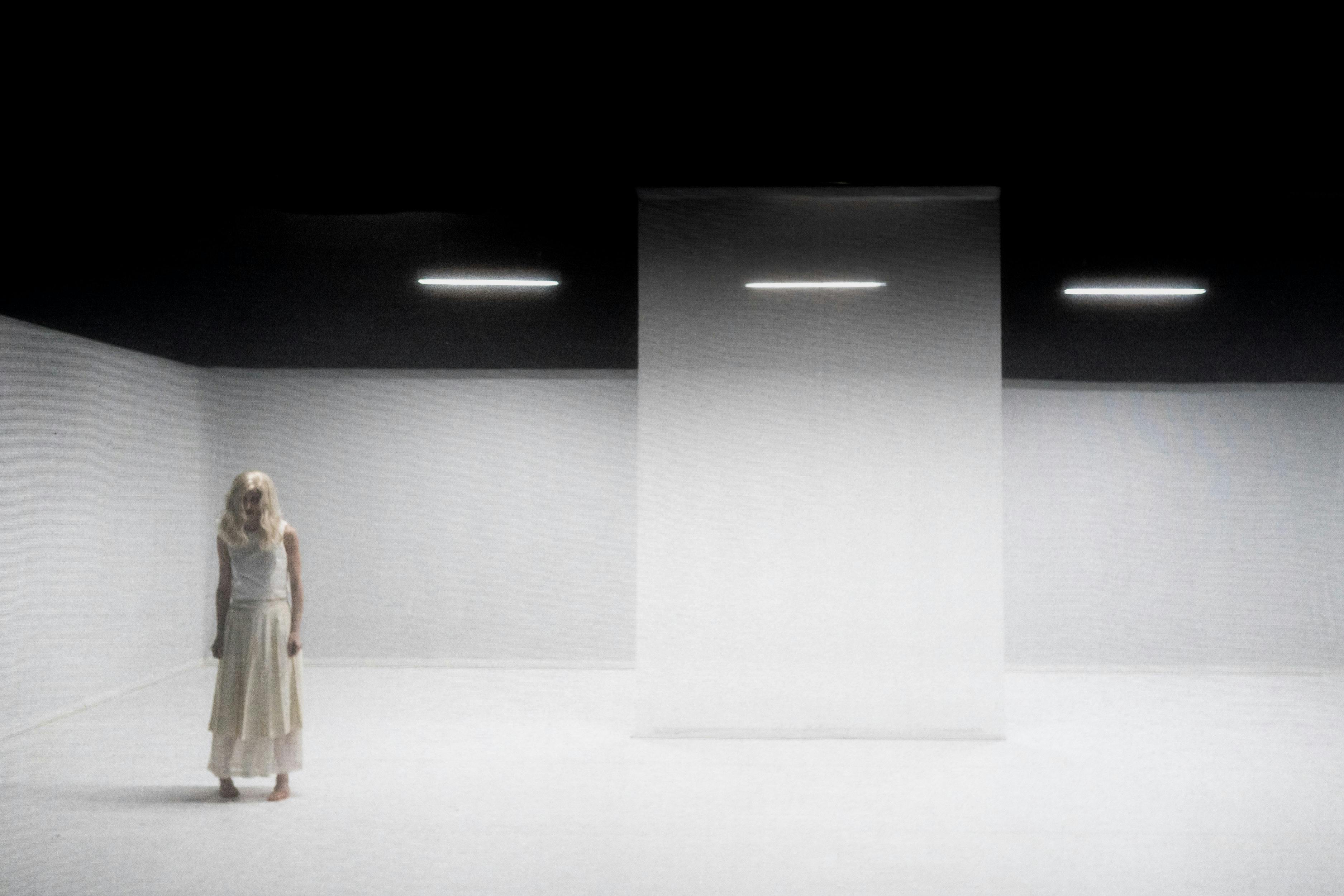
© Cosimo Trimboli, Romaeuropa Festival
Let’s begin with the genesis of the show, or actually, with what came before the genesis. Do you remember what you felt the first time you saw that photo?
Like so many of us, if only for the simple matter of our age—some of my youngest collaborators have never even seen these images—I have a vague memory of the moment I encountered the photographs taken at Abu Ghraib, which were later circulated in the international press. My immediate reaction was surely one of human and political outrage, but only when I had the chance to read Au bord for the first time did I truly confront those images, with all their scandal and power, and they were immediately ingrained in my memory forever. Hidden. The gradual process of bringing into focus the photograph discussed in the text, and its significance, is related to the process that some of the audience will experience through the show.
And how was the show born? How did your work and that of the writer Claudine Galea come together?
Actually, I first encountered Claudine Galea’s work reading Au bord. I have to thank Valentina Fago for recommending the book, and she is the one who translated the text into Italian. On first reading, I was struck by the sense of freedom conveyed by the writing, of brazenness or scandal. But also by its success in shifting the conversation about the photograph into a more intimate territory that concerns the author—and all of us. It seems to me that, behind this intimacy, lies a chilling, surgically precise analysis of the violence of the image, of the way it touches our humanity and our lack of humanity.
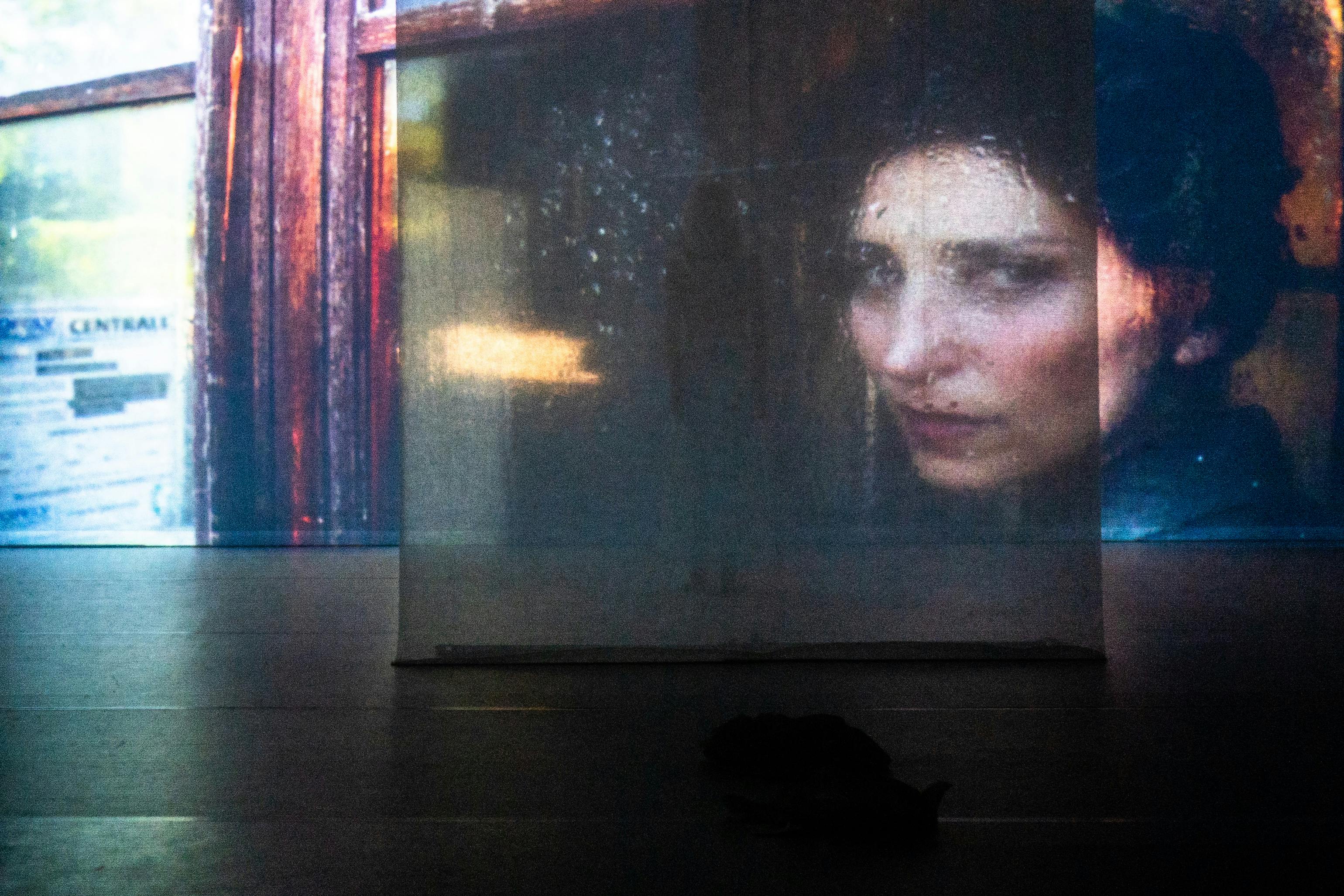
Let’s talk specifically about the photo. The “composition” reveals, above all, a hierarchy of agency. In other words, it shows how three agents (photographer, soldier and prisoner) are in an unbalanced relationship, especially at the level of speech. The photographer “speaks” through his choice of framing (leaving out parts of the prisoner’s body); the soldier “speaks” through the line of power created by her gaze and continued by the leash, while the prisoner lies silently on the ground. How does Au bord (“On the Edge”) translate these three “voices” into the singular voice of the “monologue”? Who is actually speaking in the monologue?
Needless to say, the question of the speaker and the interlocutor is more insidious than you think. It always is, but even more so in this case. We are always alone before an image. The speaker in the text is a human being, a Western woman, as an individual, but at the same time, as part of a sort of collective unconscious where images or their stereotypes reside and emerge periodically.
In fact, the photo concerns her not only in terms of her outrage, whether for political or humanitarian reasons, but also insofar as it is a cultural event: unlike the viewer, the image is never alone but speaks from a place where all the images are related. As I commented, in his Mnemosyne, Aby Warburg demonstrated how movements, gestures and poses representing the entire range of emotional arousal appear again and again in recurring forms and themes in the history of our visual culture (the so-called Pathosformel). The imbalances of the photograph here speak louder than the subjects portrayed.
Meanwhile, the speaker in the text is unquestionably the author, Claudine Galea. It is she who decided, for all of us, to stop in front of this image of horror. And yet, the dramaturgical instrument born from her writing, in my opinion, does not allow for a perfect overlap between the author and the actor interpreting the text, in this case Monica Piseddu. It is clear who speaks in the text, but on the stage? Given these premises, we rejected the possibility of an identification between Claudine Galea and Monica Piseddu and chose, on the contrary, to allow a process of disidentification of the speaker.
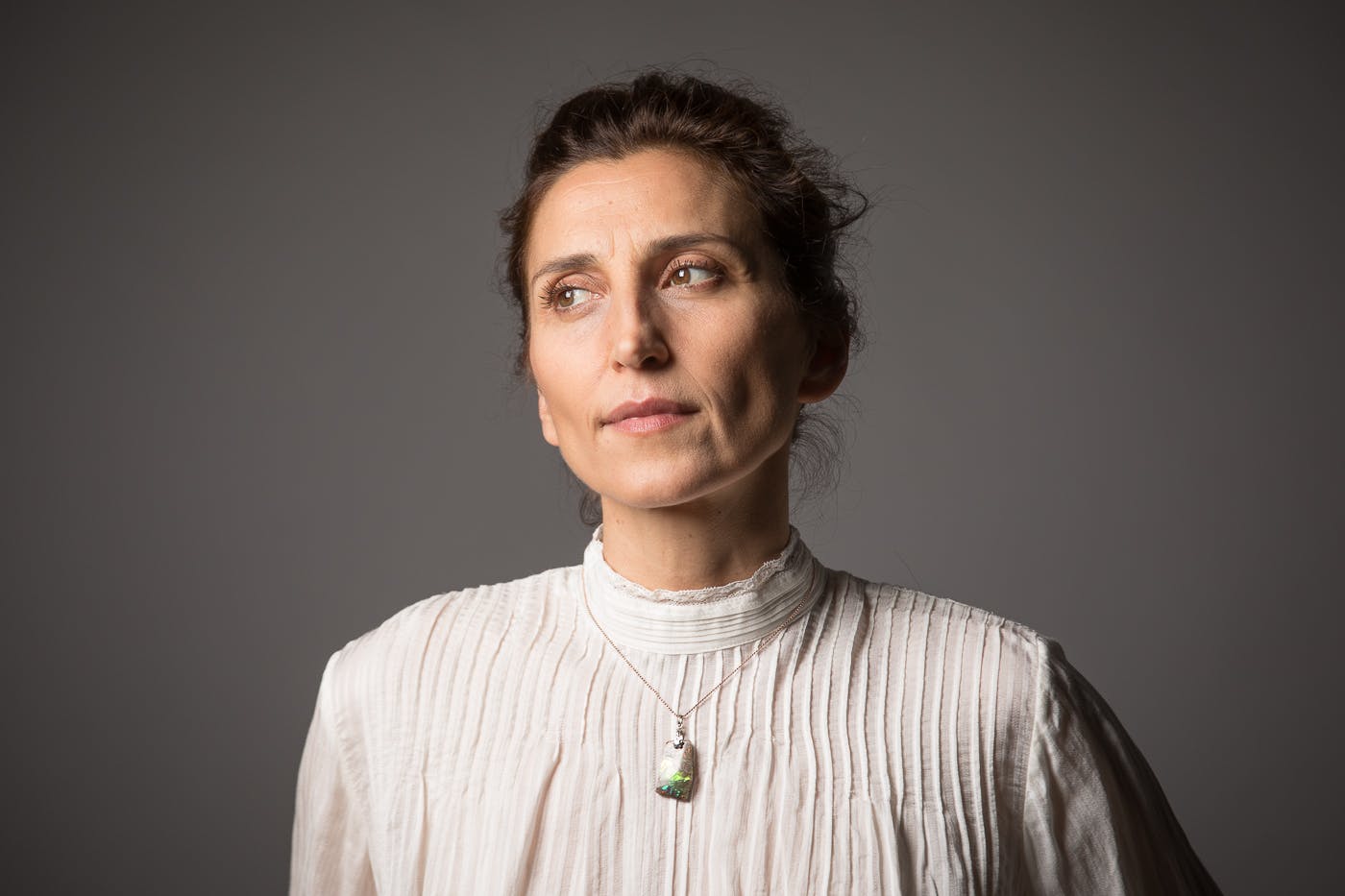
Monica Piseddu, © Claudia Pajewski
What is left of the “political” and “documentary” element of the original, which inspired the show? How did you handle this leftover part? Do you intend to remain political or are the image and situation the opportunity for a “broader” conversation, from minimal to maximum systems? The question arises in part considering the distance in time between the show and the photograph, and the inevitable selection of this shot within a corpus of work, unfortunately.
The Abu Ghraib photos are not images despite it all that eluded History. They are programmatic, not random. The subjects portrayed deliberately chose to take these pictures and shaped them. These images are an enactment of torture and inhumanity. I think that every image, every gesture, every show is “political”. The text, like the show, does not aim to highlight this “spoils of war” aspect (to quote Claudine Galea) or the documentary potential of the images.
The problem is not even the specific photo or its content. The problem is us. Us, before an image that enacts our lack of humanity and with which we avoid reckoning; we don’t even truly look at it. The horror aroused by these images—so our text seems to suggest—is proportional to what each of us guards in our hidden, shadowy areas of which the photograph is but a reflection.
Claudine Galea tries to glide over the image, passing beyond the horror and scandal to articulate a broader discourse concerning what we look at and, as Georges Didi-Huberman put it, re-inventing language through looking, making poetry in its etymological sense. In The Abu Ghraib Effect, art historian Stephen F. Eisenman argues that the superficial and hasty reaction of outrage and scandal aroused by the Abu Ghraib photos is related to a certain degree to its familiarity.
What is this familiarity? It is a feeling that comes from the repetition of “pathos formulas” in Western visual culture. Some, perhaps wrongly, have compared the photos taken in the Iraqi prison with works by Francisco Goya, those of denunciation, we would say today, which the Abu Ghraib images are not. Others associate them with pornography, stressing the explicitly sexual nature of the torture photos.
Eisenman goes on to show how these shots are profoundly bound to classicism, how their forms are rooted in our culture, to images of supremacy, torture and imperialism. That is why I believe the problem of the distance in time is a false one: there are two thousand years between me and the sculptural group of Laocoön and his children. It is up to me to find the force to recognize, beyond the awe and beauty, the suffering of the subjects, which has exactly the same political value and the same human roots—both in terms of propaganda and imperialism—as the suffering of the prisoner on the leash in the Abu Ghraib prison or the violence of the Western supremacy manifested and incarnated in these images.
So, on the one hand, the opposition words-silence; on the other, the opposition movement-stillness. The photo, by nature, is still, immobile, but it hides or closes a movement. What were the directorial and choreographic choices regarding movement? What does the monologue speaker do? And even more, what is the goal of her doing?
For Claudine Galea, the image reveals itself only when the photograph is no longer “stuck on the wall”, when “the black images begin to emerge from the white wall”. For her, the only real images are “ghost images”. And these are the images that her writing creates. With Sander Looner, we thought of the set as a white room, a white on white that rests on works like Kazimir Malevich’s White on White or, why not?, Robert Rauschenberg’s White Paintings. There is no body, no borders, maybe even no reality. It might even challenge the definition of space and, as often happens—it’s hardly new—it becomes an image. At the same time, the soundscaping work of Fred Defraye is playing. On stage, we wanted to imagine not an I that can contain the images, but rather slight, elusive figures who dive into their unrepresentability and who, above all, call on us to sharpen our gaze.
We added a simple filter that allows Monica Piseddu’s body to stay out of full view and allows the audience’s gaze to come closer and not vice versa. Similarly, the work on Marco Angelilli’s body tries to undermine the unity. We sought out other sources of inspiration in the work of Cindy Sherman, in her exploration of the construction of identity, of the ways that behaviour, performance and images construct gender stereotypes, of visual codes that create shortcuts for our construction and classification of the world and of the artificiality of these images.
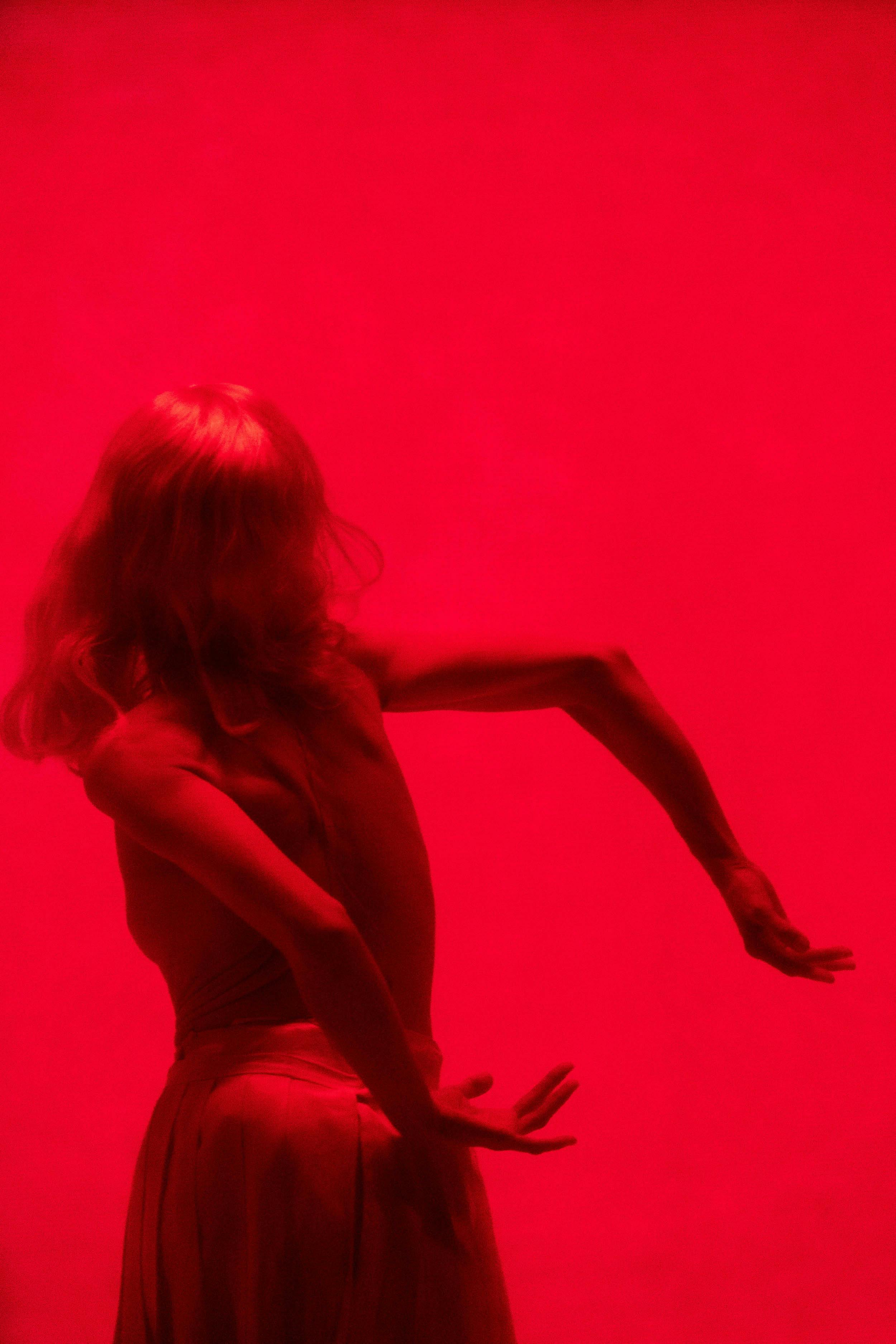
© Cosimo Trimboli, Romaeuropa Festival
In conclusion: where does this show fit in your creative path, in your “poetics”? What direction do you want to take?
First of all, this show has been a magnificent opportunity for me to share my encounter with Monica Piseddu with the public. We have wanted to collaborate for a long time, and Au bord was the opportunity. She is the ideal interpreter to recreate the complexity of the text. We read it together, discovering and exploring it, choosing different routes and paths up to the moment of staging. Despite our close relationship, it is the first time that we confronted our different ways of working, which I think has brought something new into each of our artistic careers. Mine is closely tied to contemporary and classical dramaturgy, and to music and opera.
The nature of this text represents a real challenge for me. The aesthetic, formal and visual elements characterizing my work, the almost choreographic geometries of nature that I usually construct on the stage or my generally plastic use of lighting, here encounter more complex, fragile, dangerous material, apparently lacking in narrative and yet with a very precise, sharp dramaturgical structure. It is a territory where the personal and the political, subjectivity and universality, document and imagination, reality and fiction all merge, yet where each of these elements calls for its own space within the construction of the scene.
Related events
